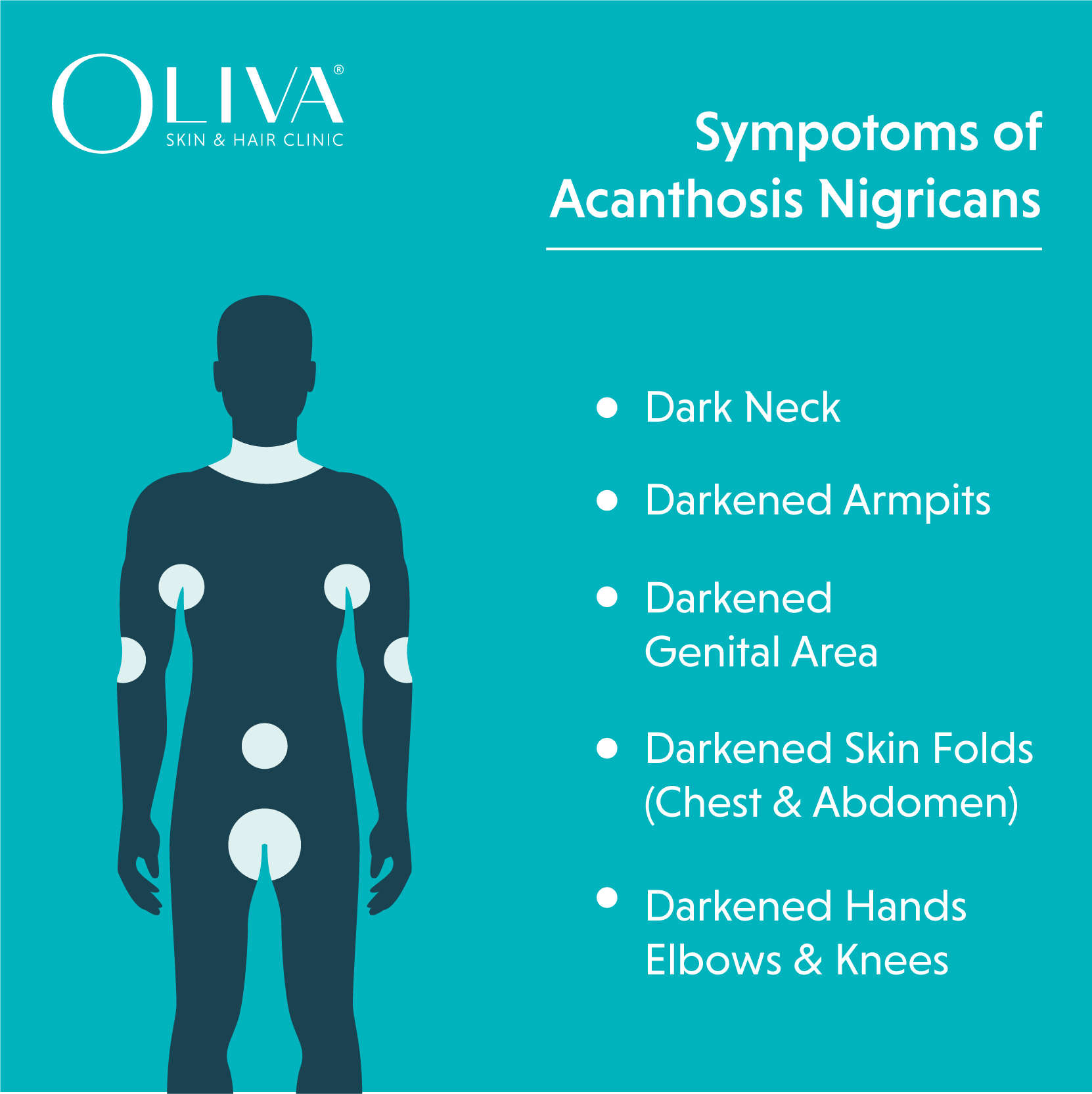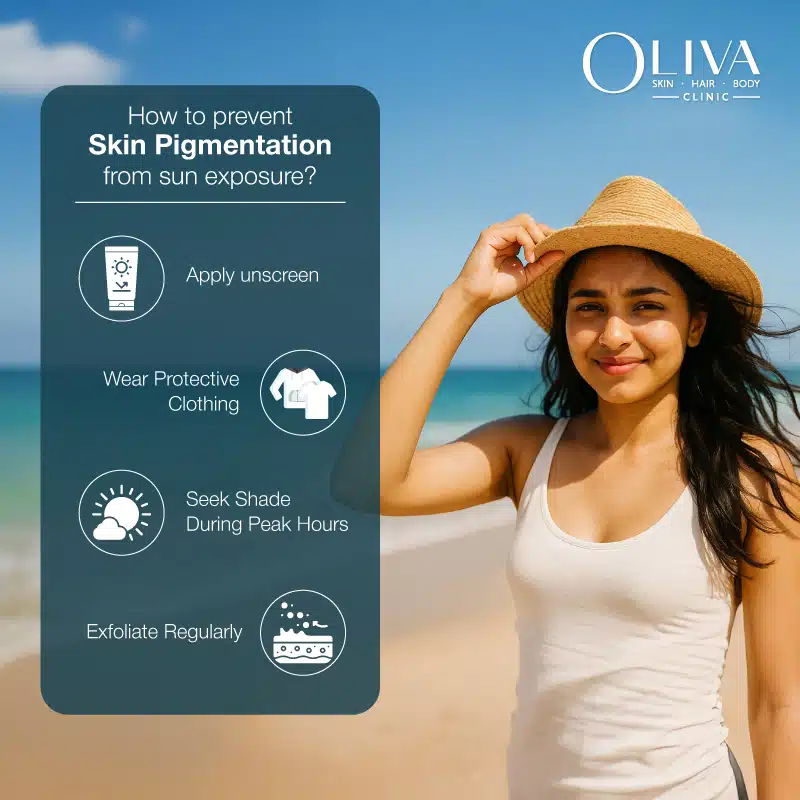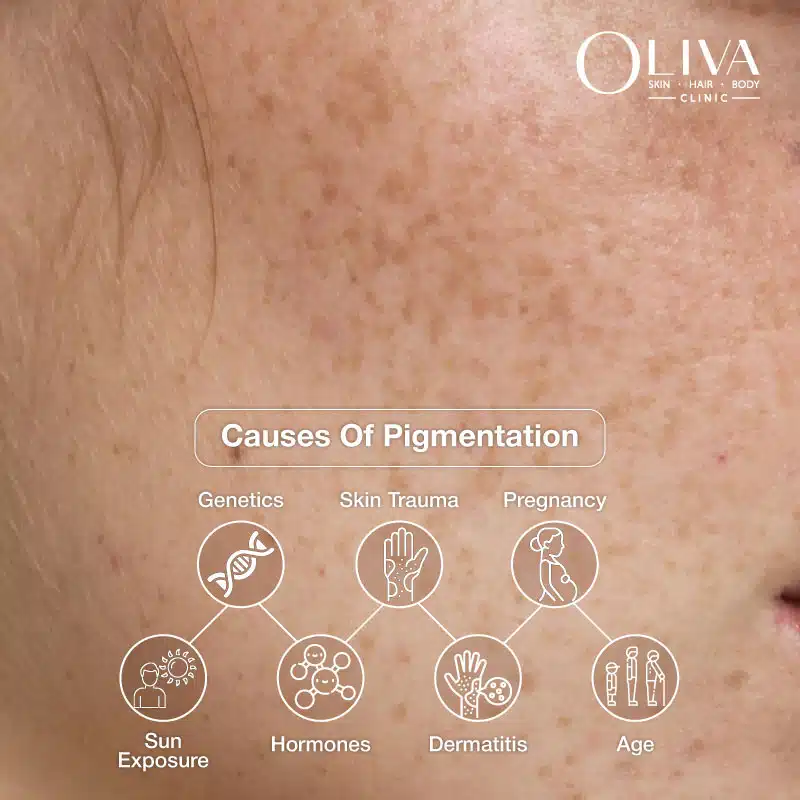In This Article
Acanthosis Nigricans Treatment: Diagnosis, Causes & Symptoms
Acanthosis nigricans is a very common skin condition, but it is often overlooked by people due to its subtle nature and similarity to other pigmentary concerns. But these velvety black patches can signify underlying health issues and you should not ignore it. Read on to know the signs and symptoms, causes, diagnosis, and acanthosis nigricans treatment right here!
In This Article

What Is Acanthosis Nigricans?
Acanthosis nigricans is a skin condition characterised by dark brown to black velvety patches of skin that most commonly appear around skin folds on the neck or underarms. It is an indicator of insulin resistance, obesity and other metabolic disorders.
What Are The Types Of Acanthosis Nigricans?
Acanthosis nigricans can be of several types:
- Benign Acanthosis Nigricans: This is a genetic form of acanthosis nigricans, which appears in childhood, unlike other types. Usually, there is no underlying disorder, and the condition does not worsen after puberty.
- Obesity Associated Acanthosis Nigricans: This is a common variant associated with obesity or weight gain that affects adults. This type of acanthosis nigricans can increase or decrease depending on weight changes and often coexists with insulin resistance.
- Syndromic Acanthosis Nigricans: This type of acanthosis nigricans may indicate two distinct syndromes. Syndrome A (HAIR-AN) consists of hyperandrogenism, insulin resistance and acanthosis nigricans. Syndrome B occurs in women with uncontrolled diabetes, ovarian problems or autoimmune diseases.
- Malignant Acanthosis Nigricans: Certain cancers, most commonly stomach cancers, can increase growth factor levels in the body, leading to acanthosis nigricans.
- Acral Acanthosis Nigricans: This occurs in dark-skinned individuals and appears on the back of the palms and soles. It is not symptomatic of any underlying health condition.
- Unilateral Acanthosis Nigricans: This is another hereditary form of facial acanthosis nigricans not associated with other health issues. It is seen on atypical sites like the face and abdomen, and particularly on one side of the body.
- Medication Associated Acanthosis Nigricans: Some medicines can lead to acanthosis nigricans by causing hormonal irregularities like oral steroids, oral contraceptive pills, or insulin.
- Mixed Acanthosis Nigricans: When a person has two or more different types of acanthosis nigricans coexisting, it is called mixed AN.
What Causes Acanthosis Nigricans?
Acanthosis nigricans causes include obesity and weight gain. These, along with type 2 diabetes, cause insulin resistance, where the body produces excess insulin, leading to the development of black patches. This can also occur due to related hormonal conditions like polycystic ovary syndrome and thyroid disorders.
Other less common causes include genetic or hereditary, medication-induced (e.g. steroids), or rarely associated with cancers.
Where Does Acanthosis Nigricans Appear?
Acanthosis nigricans occurs most commonly in skin folds due to high friction. It appears earliest in the underarm area and back of the neck (nape), but can also occur on groin folds, below breasts in females, elbows, knuckles, knees, face and rarely in other body areas like palms, soles or navel.
What Are the Signs & Symptoms of Acanthosis Nigricans?
Acanthosis nigricans symptoms you need to watch out for are slowly developing black, velvety patches of skin most commonly appearing in skin creases. It may occur with multiple skin tags and, rarely, a foul smell. Rapidly developing acanthosis nigricans can be a sign of malignancy.
Body areas affected by acanthosis nigricans include the following:
- Back of neck (nape)
- Underarms
- Groin folds
- Under breasts
- Elbows and knees
- Knuckles and toes
- Face
- Navel
- Palms and soles
How Do Doctors Diagnose Acanthosis Nigricans?
Dermatologists can perform a physical examination to diagnose acanthosis nigricans because of its distinctive appearance. Rare cases may need skin. They may suggest a few lab tests to identify the root cause, like blood sugar levels or insulin levels.
Can Acanthosis Nigricans Go Away Without Treatment?
In most cases, acanthosis nigricans does not go away without treatment. Treating the skin symptoms is not sufficient; your medical practitioner needs to address the underlying causes, like insulin resistance, to treat this type of pigmentation. Lifestyle modifications like weight loss and a healthy diet can help reduce skin darkening as the patches grow lighter and smaller in size with progressive treatment. Certain cases, like genetic or familial causes, may stop or regress on their own.
When To See A Dermatologist?
If you see dark velvety patches appearing suddenly on your neck, underarms, skin folds or other body areas, you should visit a dermatologist immediately. A dermatologist can help diagnose the skin disorder and detect and treat the underlying cause. Do not ignore small patches of skin discolouration, as they may signal a deeper pathology and an early treatment may be more beneficial.
How To Treat Acanthosis Nigricans?
Remember, treating the underlying cause of acanthosis nigricans along with necessary lifestyle modifications is more important than treating the skin darkening. Here are some treatment options that can help improve the appearance of your skin. If treated properly, acanthosis nigricans is a completely reversible condition. It may need maintenance treatments in some cases.
-
Topical Medications:
These are usually the first line of acanthosis nigricans treatment. Dermatologists may prescribe topical products for exfoliating the thick skin, lightening the area and reducing inflammation, if any. Retinoids like tretinoin are the preferred choice, which your doctor may combine with exfoliating moisturisers containing urea, salicylic acid or ammonium lactate. Lightening agents like hydroquinone or glycolic acid can also help. They may advise you to protect your skin folds with sunscreen and moisturiser application, as these areas are prone to friction, and strong products may cause irritation or burning.
-
Chemical Peels:
Your dermatologist may combine advanced in-clinic procedures with topical products for added lightening and exfoliation benefits. It can give faster results and works better on thicker, more severe lesions. Chemical peels for acanthosis nigricans contain phenol, trichloroacetic acid and glycolic acid and have very good exfoliating properties. Multiple sessions performed at a gap of a few weeks can help achieve optimum results.
Watch the video below to learn more about chemical peels:
-
Laser Toning:
Acanthosis nigricans laser treatment works for stubborn dark patches not responding or partially responding to exfoliating treatments. Laser toning is a gentle treatment for facial acanthosis nigricans, which can cause microexfoliation, reduce inflammation and break down excess melanin, leading to skin-lightening results. This is useful in cases with mixed aetiology, like acanthosis nigricans on a tanned skin area. This requires limited sessions with a few weeks gap and minimal follow-up visits.
The link below explains the mechanism and benefits of laser toning in detail:
Self-Care Tips For Acanthosis Nigricans
Here are a few self-care steps you can take if you think you have acanthosis nigricans:
- Maintain a healthy weight, or shed the extra kilos if you are overweight. Follow a balanced diet without too much sugar or dairy intake, and exercise regularly. Weight management can often reduce symptoms of acanthosis nigricans, as it is the most common cause in adults.
- Treat or manage any disease you may have, like diabetes, which can lead to acanthosis nigricans. Managing the underlying condition is the most important step you can take.
- Consult your dermatologist for proper diagnosis and treatment if you notice dark, velvety patches in any body area. Rapid development can occasionally suggest a diagnosis of cancer, so early treatment is very important.
- Before using any bleaching cream or exfoliating product, ask your dermatologist if it is suitable for you. Using over-the-counter products for skin lightening can worsen the condition, as most cases need specialised treatment.
- Note what medicines you are taking and discuss them with your dermatologist, as certain medications can also trigger acanthosis nigricans as a side effect.
Takeaway
You should visit a dermatologist if you want to know how to reduce acanthosis nigricans. They can help diagnose the exact cause and give you a customised solution for your condition based on its type, severity and location. Lifestyle modifications like weight loss can help alleviate the symptoms faster, but long-term treatment may be necessary in some cases.
Frequently Asked Questions On Acanthosis Nigricans Treatment
Acanthosis nigricans treatment cost can vary depending on the type, severity, and cause of the condition, the size of the area affected and the treatment suggested by your dermatologist.
Acanthosis nigricans does not go away on its own. Treating the symptoms and the underlying cause can minimise it.
Acanthosis nigricans lesions are not harmful by themselves, but they may indicate underlying health concerns like diabetes, insulin resistance and polycystic ovary syndrome, which may demand immediate medical treatment. Rapidly developing acanthosis nigricans may even signify cancer in rare cases.
No, acanthosis nigricans mostly occurs due to internal causes and is not contagious. However, it has a genetic basis and can sometimes run in families.
The most common cause of acanthosis nigricans in adults is an increase in weight. In such cases, weight loss can help reduce the lesions. However, weight loss alone may not totally resolve the skin condition as the underlying cause may require medical diagnosis and treatment.
The best treatment for acanthosis nigricans is to treat the underlying cause, if any. Your dermatologist may recommend a medico-aesthetic treatment to treat the underlying cause as well as provide visible results.
No, acanthosis nigricans is a disorder arising due to underlying health conditions and not any fungal infections.
The most common cause of dark neck is acanthosis nigricans, commonly affecting overweight adults with underlying hormonal disorders like insulin resistance or polycystic ovary syndrome.
Yes, certain exfoliating and lightening creams work well on acanthosis nigricans. Exfoliating creams containing retinoids like tretinoin, urea, and salicylic acid, as well as lightening creams with glycolic acid and kojic acid, can help reduce the symptoms. Please consult a qualified dermatologist before using any such prescription creams for the best results without side effects.
Familial and genetic forms of acanthosis nigricans may occur in childhood and reduce with age. Obesity or hormone imbalance-related acanthosis nigricans, most commonly affects adults between 20 and 40 years. Cancer or medication related acanthosis nigricans can occur at any age, though more common in older adults.
The timeline of acanthosis nigricans treatment results varies based on the type, cause, location, and severity of the condition, as well as the suitable modality selected.
Read This Next

How to Remove Dark Spots Caused by Pimples: Dermatologist-Approved Solutions

Skin Pigmentation Due to Sun Exposure: Causes, Treatments & Prevention

Causes Of Pigmentation On Face: Treatments & Prevention Tips

10 Proven Home Remedies for Melasma: Aloe Vera, Turmeric, Lemon Juice & More

Do Home Remedies for Pigmentation Really Work? Expert Insights



